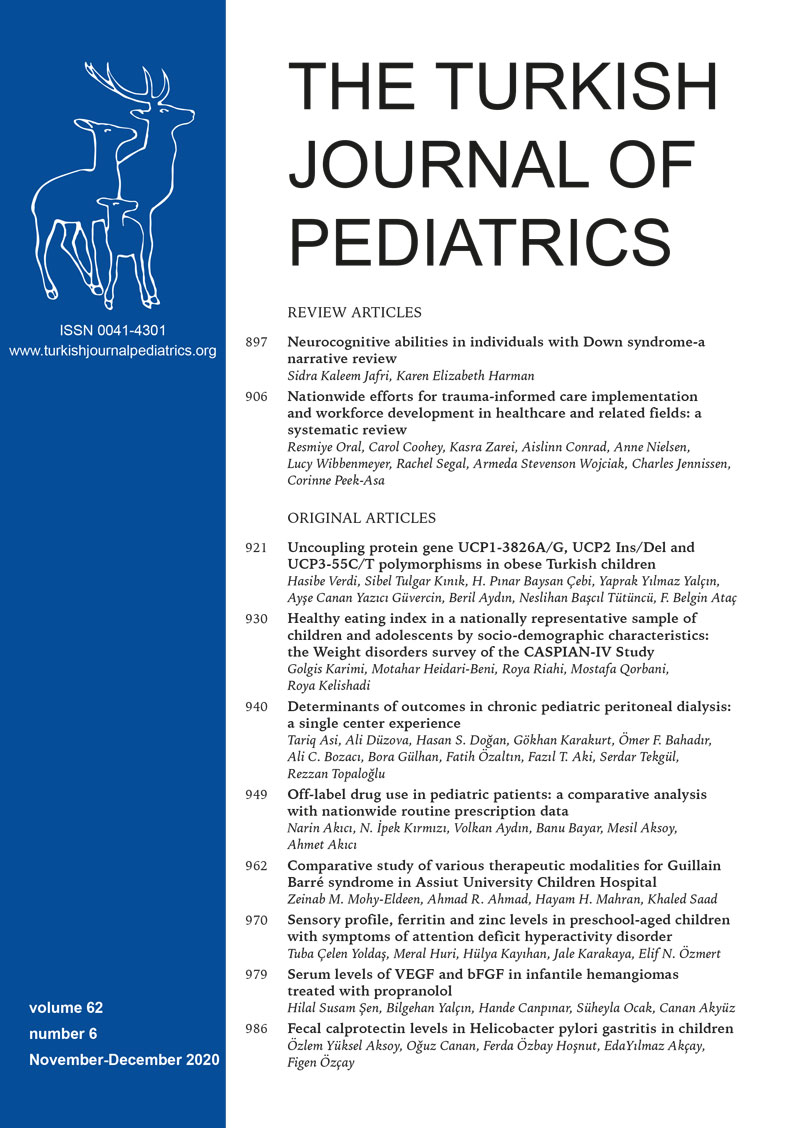Abstract
Background. Visual problems, cerebral visual impairment, refractive errors and strabismus are commonly found in preterm infants in long-term follow-ups. The aim of this study was to determine the factors that lead to the development of amblyogenic risk factors, such as high refractive errors, anisometropia and strabismus, in the long-term evaluation of preterm infants.
Methods. We retrospectively evaluated children who were screened for retinopathy of prematurity (ROP) and who had a 3rd year ophthalmologic examination. The impacts of sex, gestational age (GA), birth weight (BW), BW for GA, being small for gestational age (SGA), being appropriate for gestational age (AGA), multiple pregnancies and the results of ROP screening on refractive errors and the development of strabismus were evaluated by logistic regression analysis. The SGA and AGA groups were compared in terms of refractive errors and presence of strabismus.
Results. Six hundred and eight children, including 317 (52.1%) males and 291 (47.9%) females, were included in the study. The mean GA was 31 ± 3 weeks (24-36), and the mean BW was 1505 ± 435 g (600-2460). The number of SGA-born children was 101 (16.6%). Manifest deviation was detected in 42 (5.6%) children, and optical correction was required in 101 (16.6%) children. Being an SGA infant and multiple pregnancies were risk factors for refractive errors requiring optical correction, and hyperopia (≥3.00 D) was found to be a risk factor for the development of strabismus in the multivariate regression analysis. Additionally, the SGA group was at high risk for strabismus, hyperopia, high astigmatism and the need for optical correction.
Conclusions. We concluded that SGA seems to be associated with an increased risk of strabismus and a high refractive error. It should be taken into consideration during follow-up examinations of SGA infants.
Keywords: premature, refractive error, retinopathy of prematurity, small for gestational age, strabismus
Copyright and license
Copyright © 2020 The Author(s). This is an open access article distributed under the Creative Commons Attribution License (CC BY), which permits unrestricted use, distribution, and reproduction in any medium or format, provided the original work is properly cited.














